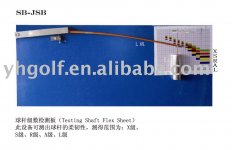Guys,
I was playing in a tournament yesterday and a friend introduced me to her boyfriend who asked me if I made "center cut" shafts. I told him I hadn't ever heard the term and I don't ever remember seeing that term used here. He said he heard it was supposed to make a better shaft, yada, yada, yada.
Anybody know what he's talking about?
Thanks :thumbup:
Gary
I was playing in a tournament yesterday and a friend introduced me to her boyfriend who asked me if I made "center cut" shafts. I told him I hadn't ever heard the term and I don't ever remember seeing that term used here. He said he heard it was supposed to make a better shaft, yada, yada, yada.
Anybody know what he's talking about?
Thanks :thumbup:
Gary

